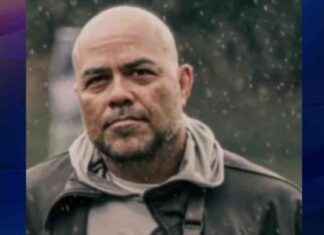MEXICO CITY aEUR “Ex-Mexican President Luis Echeverria was blamed for many of Mexico’s most brutal political murders in the 20th century. Current President AndrA(c).s Manuel LA3pez Obrador confirmed this Saturday.
LA3pez Obrador, via his Twitter account, sent condolences and sympathies to Echeverria’s loved ones “in the name” of the Mexican government but didn’t express any sadness. Echeverria was the Mexican president from 1970 to 1976.
Echeverria was admitted to the hospital for pulmonary complications in 2018.
2005: Echeverria was ruled ineligible for trial on genocide charges stemming out of the 1971 student massacre, as depicted in Oscar-winning film “Roma.”
Judge Echeverria ruled that Echeverria could have been guilty of homicide but that he could not be tried as the statute of limitations for this crime expired in 1985.
Students marched from a teacher’s college west of the city centre in 1971 for the first major protest since the massacre that claimed hundreds of demonstrators in 1968. They were stopped by plainclothes thugs for a few blocks.
When they are trying to buy baby furniture from a nearby store, the main female characters of “Roma,” are shown as being incidental witnesses to the slaughter. They meet the protagonist’s boyfriend who is shown as being part of the repression.
Oscar winner for best foreign-language film was “Roma”.
Echeverria has suffered from neurological and respiratory problems in recent years.
He was the first Mexican former head of state to be formally charged with criminal wrongdoing in 2004. Prosecutors tied Echeverria’s arrest to Mexico’s “dirty War”, in which hundreds of leftist activists, members of fringe guerrilla organizations, were killed or imprisoned without leaving a trace.
A motion was filed by Ignacio Carrillo, special prosecutor, asking for a judge’s order to issue an arrest warrant for Echeverria in connection with genocide charges in two student massacres. The first is the 1968 killings at Tlatelolco plaza. Echeverria was then interior secretary.
A few weeks prior to the Summer Olympics in Mexico City in 1968, government sharpshooters opened fired on student protestors in the Tlatelolco Plaza. Soldiers also opened fire. The death toll has been estimated at between 25 and 300. Echeverria denied being involved in the attacks.
According to military reports at least 360 government-affiliated snipers were deployed on the buildings around the protesters.
A federal court in Mexico ruled that Echeverria was not subject to genocide charges. It also ordered Echeverria’s absolute freedom.
Mexico’s loss of Echeverria was not widely mourned. FA(c)lix HernA!)ndez Gamundi aEUR”, a leader of the 1968 student movement, was there on the day that the massacre took place and saw his friends being killed.
HernA!ndez Gamundi stated that “The death ex-president Luis EcheverrAa was regrettable, becuse he died in total silence because despite his extremely long life, Luis Echeverria has never decided to come out about his actions.”
He said, “Ofcourse we don’t grieve his death.” We mourn his opacity throughout his life, and his decision not to make an accounting. He wanted to take full advantage of the immense political and economic power he had for the rest his life.
. HernA!ndez Gamundi stated that “He delayed for many years the inevitable process democracy that began in 1968.” “October 2, marked the beginning to the end of the old regime. However, it took many years.”
Echeverria died as his Institutional Revolutionary Party (PRI aEUR”), which ruled Mexico for seven decades with an iron hand, lost power in 2000. PRI aEUR”, is now discredited and riven internally by internal disputes and scandals.
Echeverria was born in Mexico City on January 17, 1922. She received her law degree in Mexico’s Autonomous National University (Mexico) in 1945.
He began his political career shortly thereafter with PRI. Later he held positions in the navy and Education Department. He was promoted to chief administrative officer at the PRI.
Echeverria was appointed interior secretary in 1964 under the leadership of Gustavo Diaz Ordaz. He was responsible for domestic security. In 1968, he held this position when the government reacted to student protests against democracy, fearing that they would make Mexico look bad as host for the Olympics.
Echeverria resigned from the interior post in November 1969 and became the PRI’s presidential nominee.
He won the race and was sworn into office on December 1, 1970.
Echeverria opened Mexico’s border to Chileans fleeing Pinochet’s dictatorship after Allende was assassinated by Pinochet in 1973.
Echeverria traveled around the globe promoting himself as a leader of leftist governments. He was known for his resolute opposition to guerrilla groups and for being a leader in Mexico.
Carrillo, Carrillo’s prosecutor, said that Echeverria was “the master of illusion, and the magician of deceit”.
Juan VelA!squez was the lawyer who represented Echeverria. He said that the ex-president had died in one of his homes but didn’t specify the cause.
VelA!squez stated that he told Luis that even though no one aEUR”, not him, me or his family, wanted him to stand trial, it was the best thing that could happen.”
Echeverria, in his later years, tried to present himself as an older statesman. He lived in a quiet retirement in his sprawling, upscale Mexico City home.
Mexican prosecutors claim that Echeverria directed an elite force made up of plain-clothes state fighters, known as the “Halcones” or “Falcons to attack suspected government enemies. This group was responsible for 12 deaths or beatings during the student protest on June 10, 1971.
Despite the decades-long calls for justice from activists and opposition politicians, Echeverria was never sent to jail. However, he was temporarily placed under house arrest.








